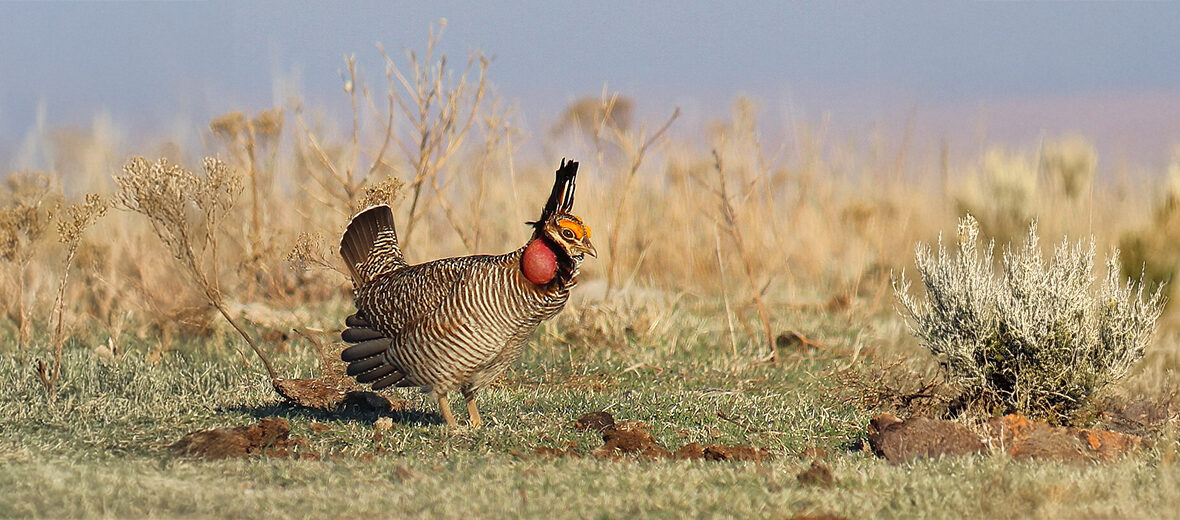
The lesser prairie-chicken is a species of grouse. They can be found in Kansas, Oklahoma, Texas, New Mexico, and Colorado. These birds face numerous threats such as habitat loss and destruction at the hands of farming, ranching, utility lines (which can result in electrocution), fires, and fire suppression; hunting; trapping; pollution, in the form of oil contamination; and climate change, which can cause droughts and extreme temperatures. The IUCN lists these birds as Vulnerable, and their populations are decreasing.
First the Stats…
Scientific name: Tympanuchus pallidicinctus
Weight: Up to 28.7 ounces
Length: Up to 16.1 inches
Wingspan: Up to 24.8 inches
Lifespan: Up to 5 years
Now on to the Facts!
1.) Males have a pinkish-red Gular sac on each side of their neck that can be used for mating displays.
2.) Lesser prairie-chickens prefer habitats that contain sand sagebrush and shinnery oak, as well as a variety of grasses and shrubs.
3.) Known for their lekking behavior (gathering of groups of males to compete for breeding rights) these prairie-chickens can emit loud booming calls, aka gobbling, that can be heard up to 1 mile away.
4.) Foraged seeds, crops, leaves, fruits, forb buds, and insects make up their diet.
5.) Most of their water requirements are obtained through the foods they eat, so they rarely drink standing water unless really necessary.
But wait, there’s more on the lesser prairie-chicken!
6.) Nests are dug up to 3.97 inches into the ground at about 7.87 inches across, and lined with feathers, grasses, and leaves. They are typically situated under the cover of bushes or among tall grass.
7.) Females lay up to 14 eggs that hatch in up to 23 days.
Did you know…?
The lesser prairie-chicken’s habitat has unfortunately been reduced by 85%, and their populations have declined by an astounding 97% since 1800, in part due to unrestricted hunting.
8.) Chicks fledge in up to 4 weeks. After up to 10 weeks, the hen will leave the nest to molt and leave the chicks to their own devices.
9.) Out of the remaining patches of suitable habitat, only about 0.1% are sufficiently able to sustain even a small population of these birds.
10.) In May 2023, the U.S. Senate unfortunately voted to strip the lesser prairie-chicken of its new listing using its authority under the Congressional Review Act. President Joe Biden’s administration threatened to veto the bill if the House of Representatives passed it, which the House did on July 27. The bill was passed by the Senate, but fortunately later vetoed by Biden on September 27, 2023.
Now a Short Lesser Prairie-Chicken Video!
Be sure to share & comment below! Also, check out the Critter Science YouTube channel. Videos added regularly!
Want to suggest a critter for me to write about? Let me know here.
Some source material acquired from: Wikipedia & IUCN
Photo credit: USFWS Endangered Species




